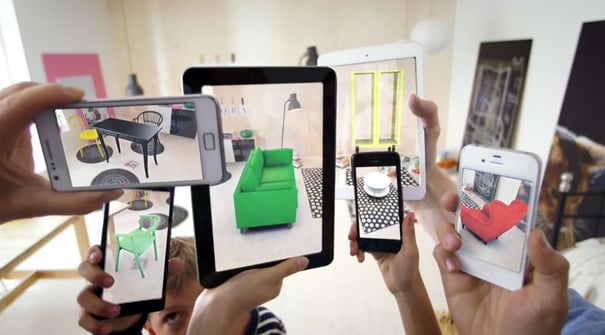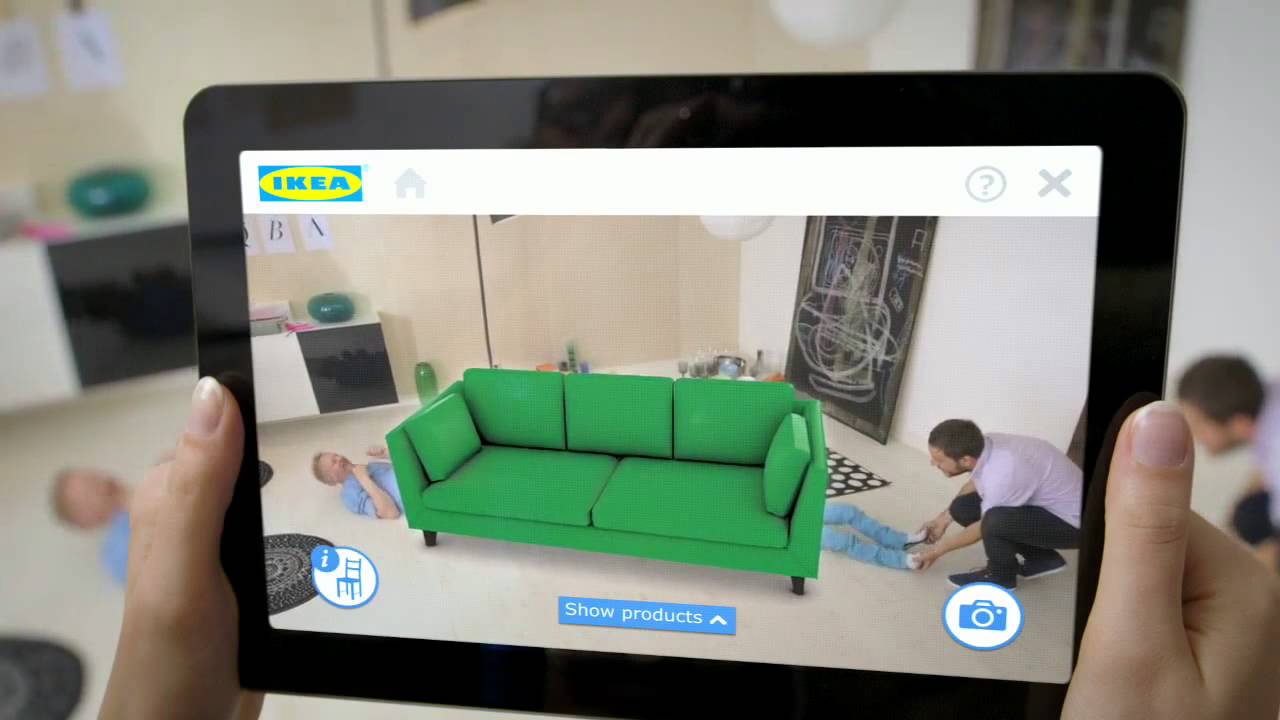Augmented reality (AR) is projected to be a $120 billion industry by 2020. By 2018, it will have 200 million users, and though many will ultimately be from the health care, tourism, and entertainment industries, it will be retail, according to Tech.Co, that will first harness its power and potential.
But let’s back up a step or two. There are a few definitions for AR, but here’s our favorite (also brought to you by Tech.Co): it is the integration of graphic content into live videos or user environments. It uses webcam and GPS data to give users relevant and spatially aware content. It blends virtual and real life. Yes, Pokémon Go counts, but only sort of. If you want to see what AR will look like soon, click here.
Only a Matter of Time (and the time is now)
So what can augmented reality in retail acutally accomplish? A whole lot, and, as it turns out, it already has started.
Marxnet builds AR apps and, according to CEO Beck Besecker, “Every single client comes to us with a slightly different use case but they all share one thing in common: the need to help customers visualize purchases in custom context.”
And that, right there, is AR’s initial promise: it allows customers a preview of sorts, a way to see their purchase as part of their lives before they must commit. In retail, 9% of in-person purchases, and a stunning 30% of those made online, are eventually returned. This is an obviously major pain point for consumers and a huge expense for businesses.
That’s why many companies are already incorporating AR in both their B2C and B2B strategies.
You’re Projecting!
Ikea, whose overwhelming superstores are notoriously difficult to navigate, has invested heavily in AR to bring the showroom into the customer’s living room. Through their digital catalogue, customers can select an item—let’s say a Bjursta—and then, with their tablet or smartphone, see a spastically accurate representation of the extendable table in their dining room. Capturing from the device’s camera in real time, the app shows customers a display of their dining room and then imposes the table, allowing them to tryout different locations, color combinations, and sizes.

Instead of your home, Shisedio makeup uses your face. They project makeup products onto customers faces at their digital makeup counters, allowing them to visualize the omnipresent department store makeover without the mess and time commitment. And Converse (since 2010 no less!) allows users to see shoes on their feet as they point the camera down their leg so they can digitally “try them on” before purchasing them online. Now Nike is getting its foot in the door too.
Helping Businesses Do Business
Companies are also exploring, and already exploiting, AR with their business-facing salesforce as well. Coke uses AR on tablets to allow their sales people to show retailers how and where a cooler would fit in their establishment, complete with the various theme and color options. Similarly, L’Oréal offers its European salon partners AR representations of their hair and beauty product displays.
A Digital Butler?!
Yes, it is a cliché, but here it is nonetheless: this is only the beginning.
Imagine a themed avatar, such as a butler in high end establishments or a cartoon character in those for kids, leading customers around, using radio frequency identification to find specific sizes and colors. It would offer advice when solicited, suggesting further purchases and driving sales, while providing individual and personalized attention to customers enrolled in your loyalty programs.
And then imagine the things we’re not even imagining yet.


